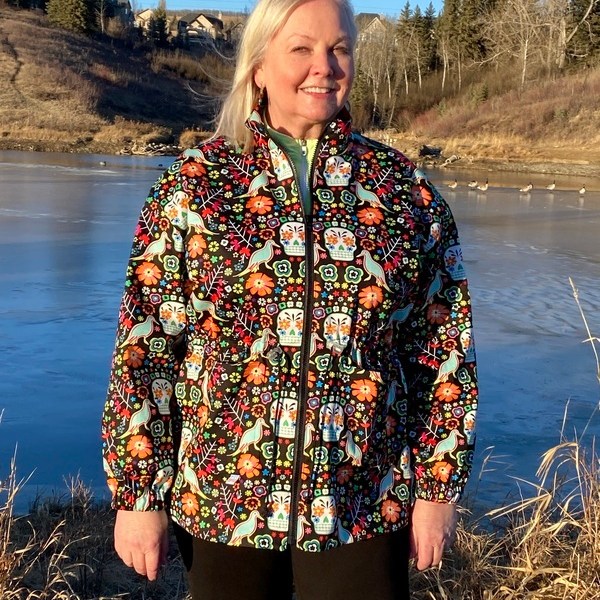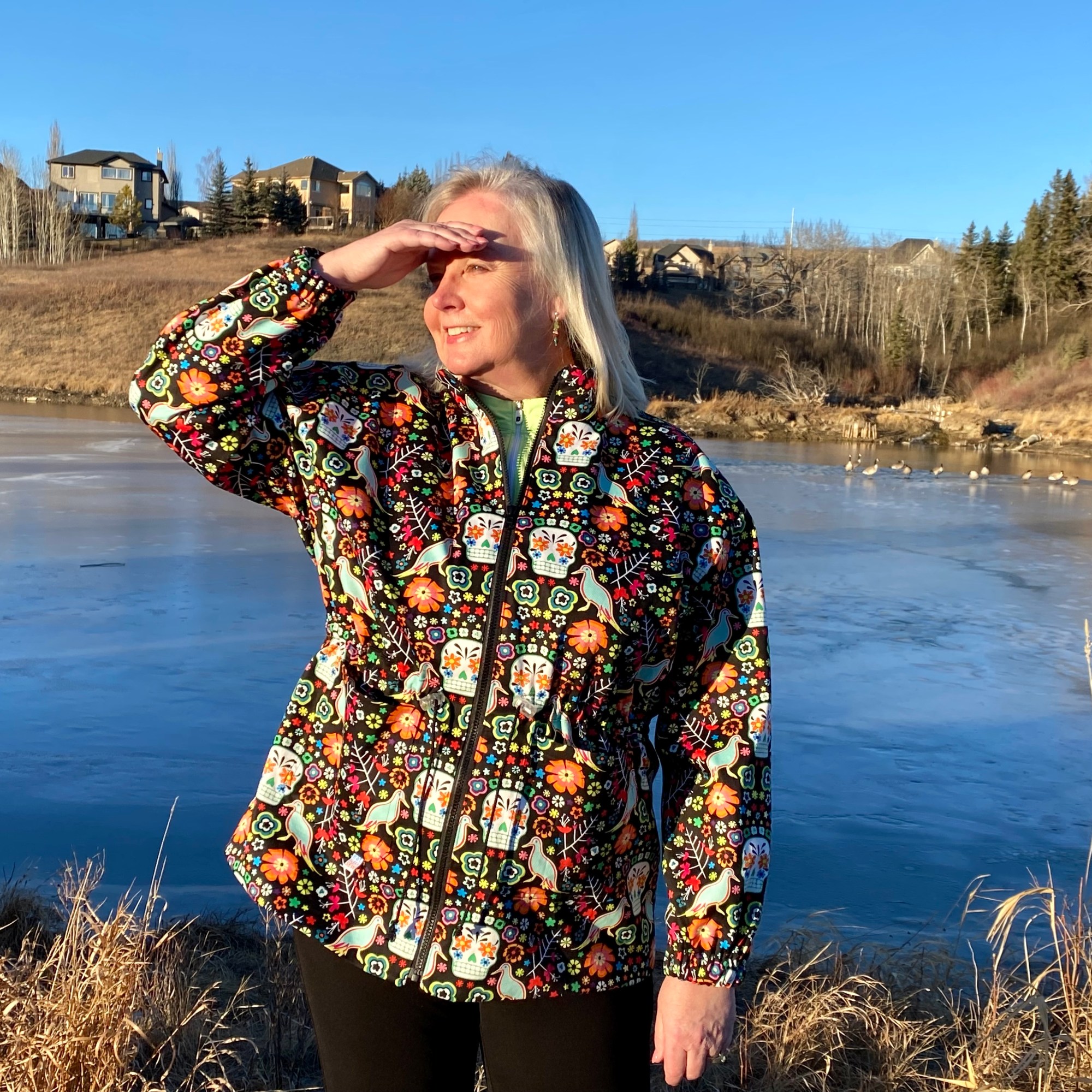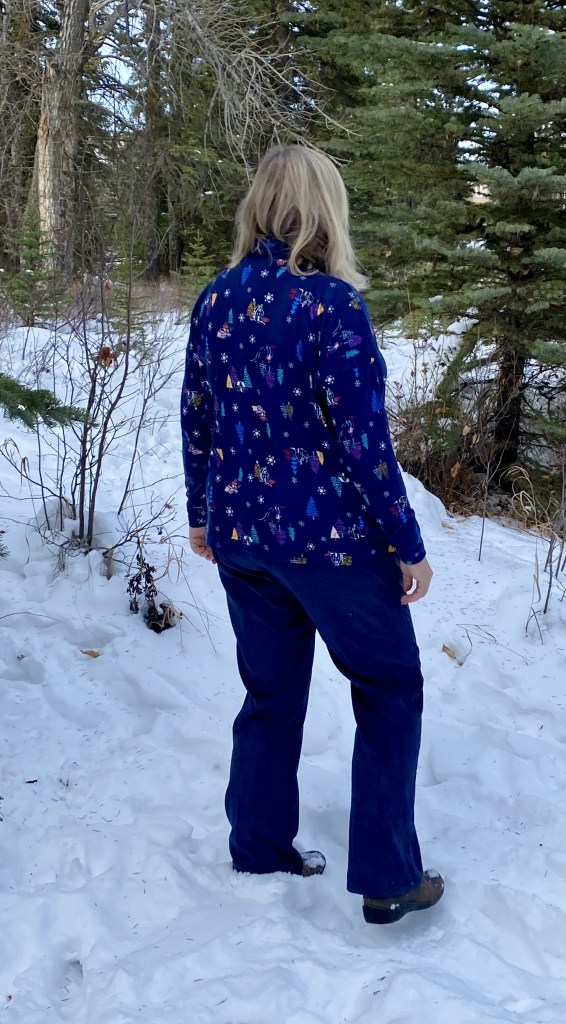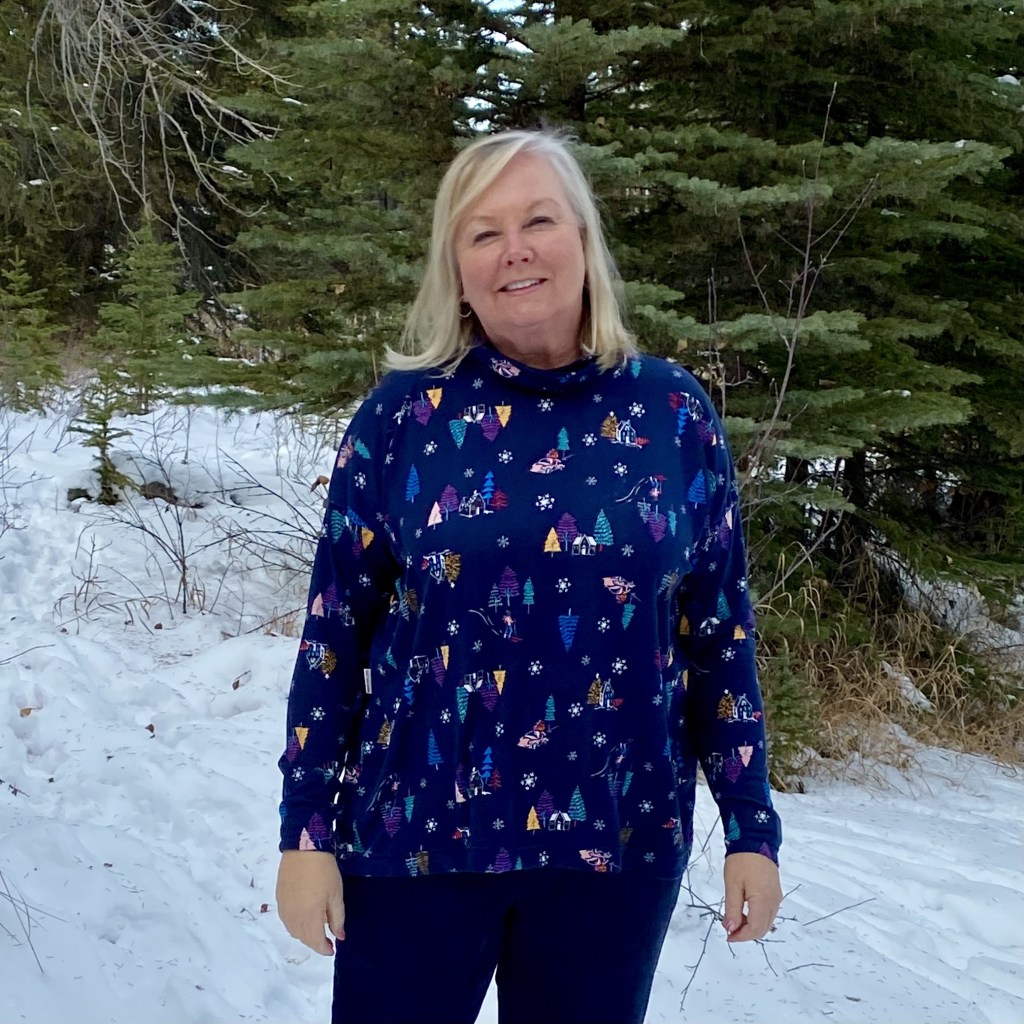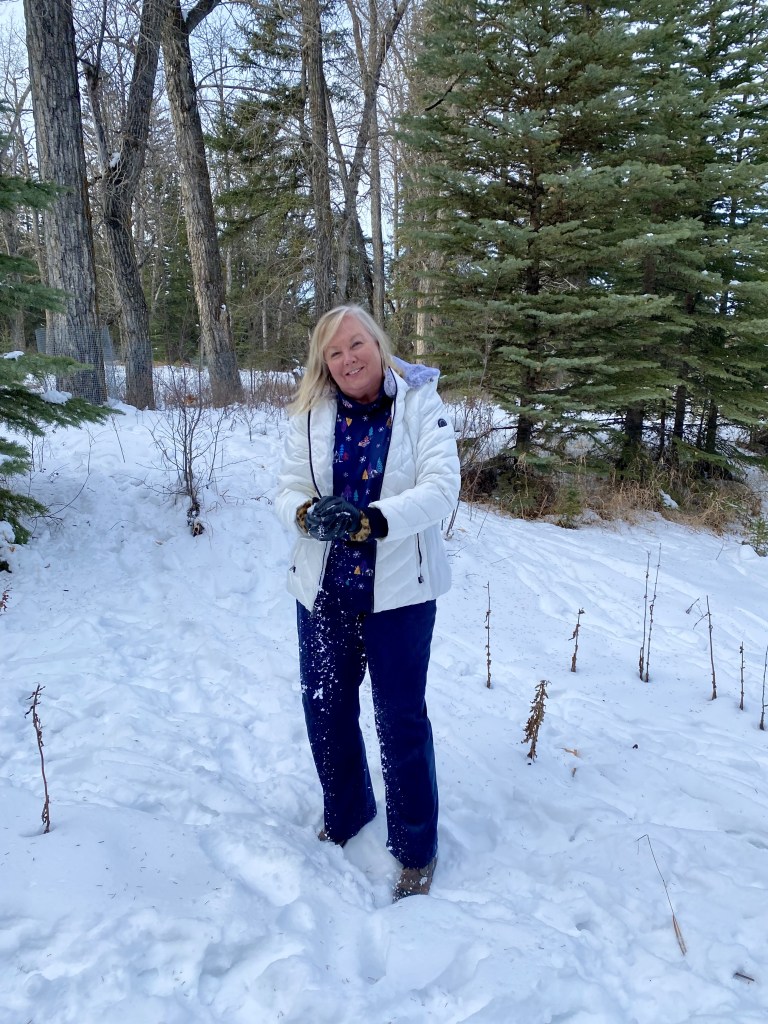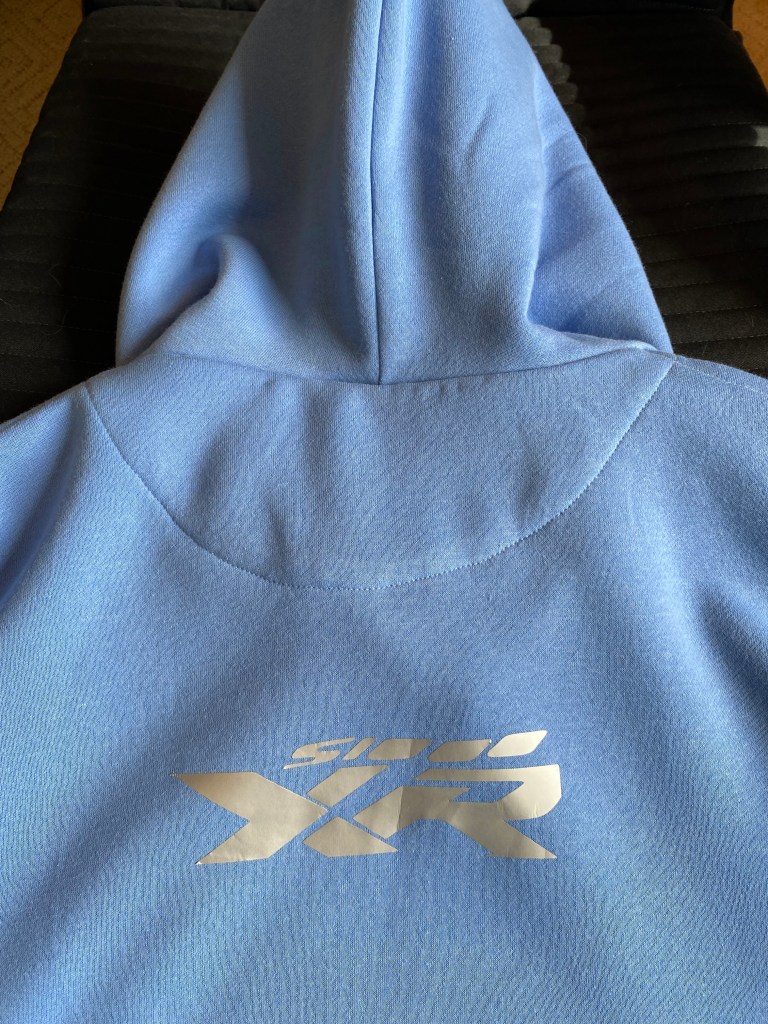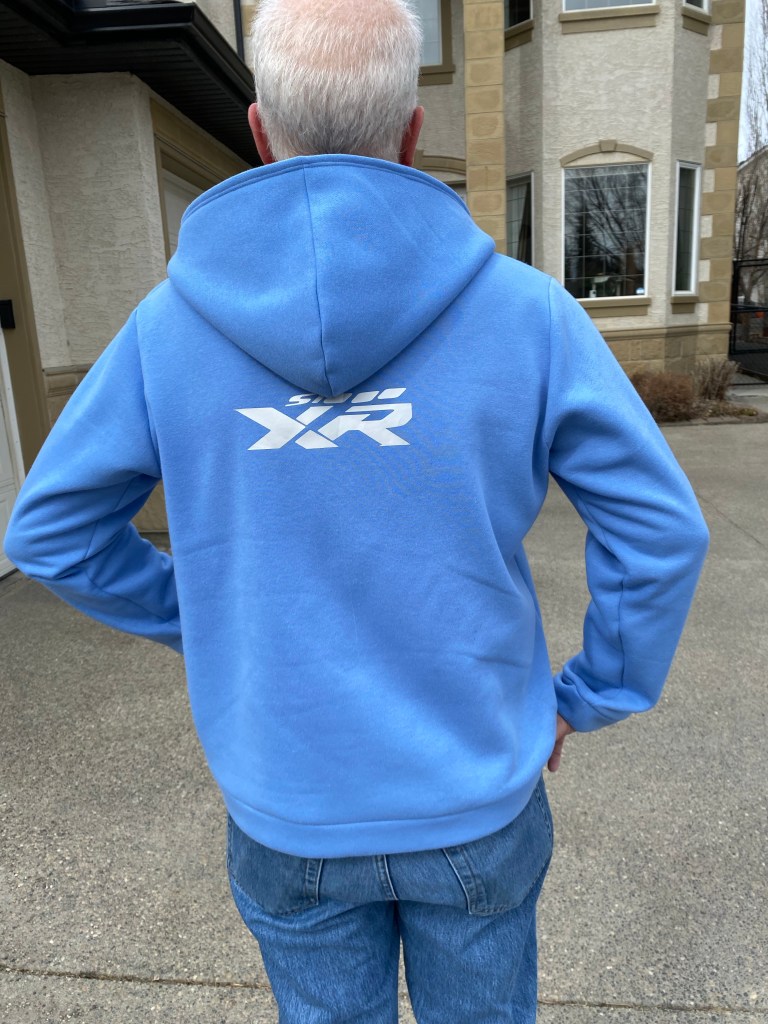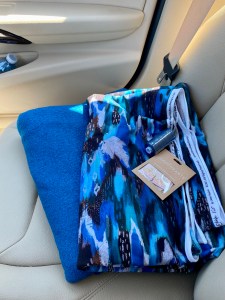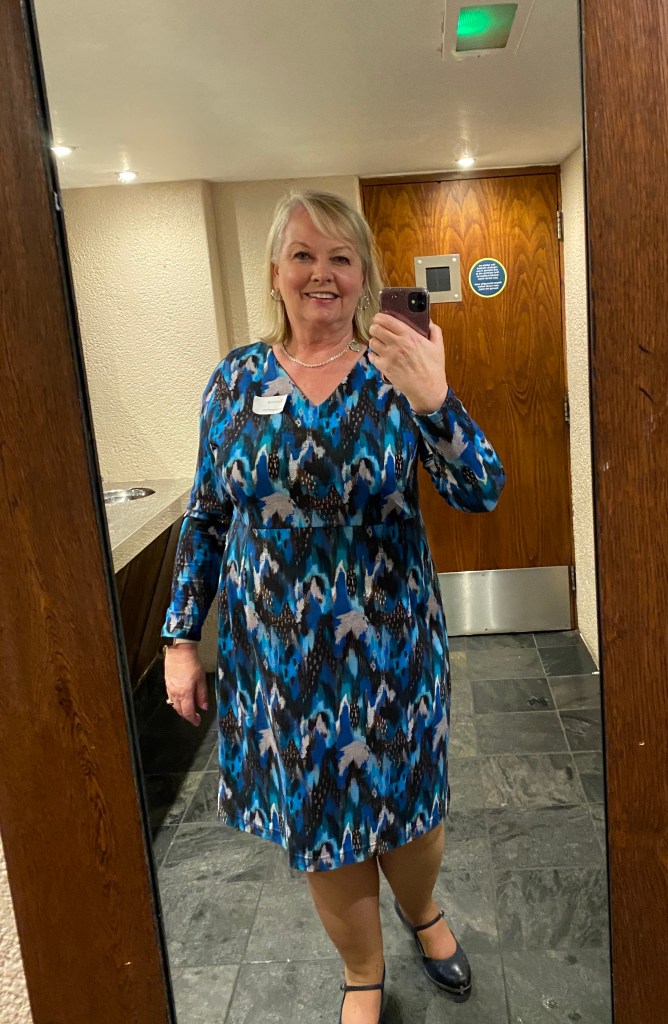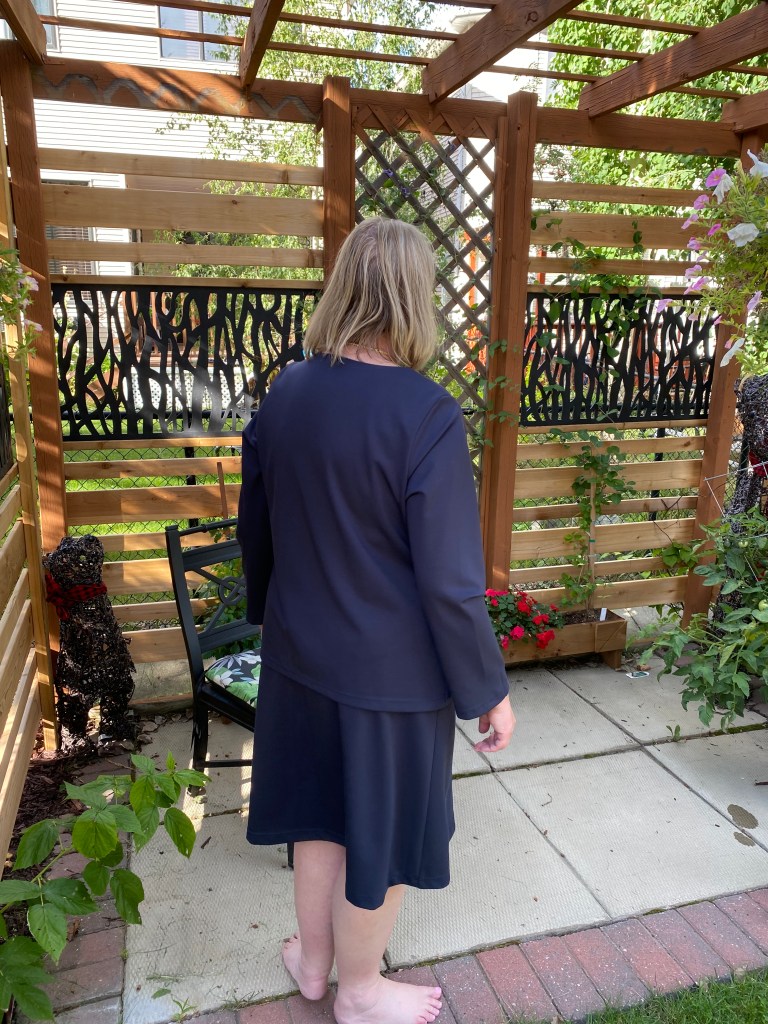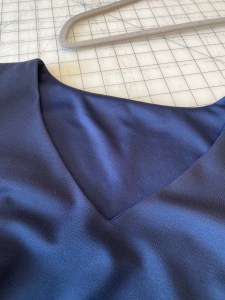This garment was sewn and reviewed in March 2022. I wrote a review on a sewing website/forum that I no longer visit or use. Rather than lose the reviews, I’m recreating them here on my blog.
The Pattern
Get ready for spring or fall with this great utility jacket. Available in sizes XXS-XXL, this anorak features optional hood with zip-front closure and pocket variations. Express your individuality by making this jacket sportier using organza, or go for a casual look with twills and cotton fabrics.
Simplicity 8843 – I made the version without the hood in size Large.
Now that I’m back in a cooler climate, I need jackets. Anoraks are great for this climate and my ‘shape’ in life because they are long enough to wear over tights or leggings, big enough to wear over a sweater, and the waist tie adds some shape (and keeps the cold wind out).
Fabric Used
100% Cotton Twill for the jacket. 100% Nylon ripstop lining.
Both were gifted to me by FabricMart because I’m a Fabricista vlogger/blogger.
Alterations and Changes
I added a lining to make this wearable in early spring in this part of the world where spring may not come until late May. I have not added a lot of linings in my life but this was relatively simple because I just needed to use the front, back, and sleeve pieces for the lining.
For a bit of fun, I fussy cut a piece of the design and stitched that to the inside of the lining. No one else will see it, but it was something that made this jacket bespoke.

Sewing Comments
Again, another relatively easy project that a beginner could sew with a bit of patience. There are challenges with the zipper (made more challenging by adding the lining). And I added work for myself when I used a bold print that would need to be placed properly and matched. I did not mark the pockets well so first sewed them on too high, then when I moved them down they needed to be recut to align with the print.
The cord at the waist is in an external channel that again, needs to have the print aligned. That was actually easier than the pockets!
Conclusion
This turned out to be a really enjoyable sewing project and I’m really happy with the final result!
I would definitely use this pattern again, perhaps with a technical fabric. It’s a nice shape for every day. I wasn’t as successful in matching the fabric design as I had hoped to be but I did add a lining and that was a growth moment 😉
This is a great weight fabric, and the ripstop lining does a good job of cutting the wind which makes this a good choice for spring and fall. And the design is interesting but not so weird that it can’t be worn as outerwear to work.
Thoughts after wearing this jacket for a year
One change I would make if I use this pattern again is to add some length to the sleeves. They are just barely long enough when walking around but pull up when driving. There’s a bit of fabric left in a scrap bag so this may become one of those ‘mending’ projects for the future.
If you’d like to see more, this project is on my YouTube channel.
Sewing an Anorak for Spring

